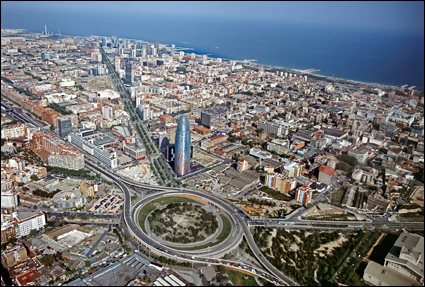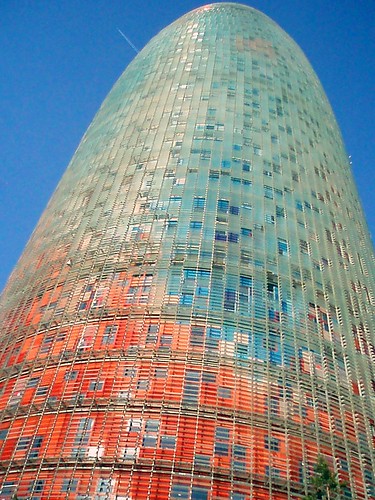commuter guy
Active Member
- Joined
- Feb 1, 2007
- Messages
- 894
- Reaction score
- 130
From boston.com:
LAWRENCE HARMON
Geekville, a new neighborhood for Boston
By Lawrence Harmon | January 26, 2010
IMAGINE THOUSANDS of young researchers and techies working in industry clusters and living in semi-communal housing along a South Boston waterfront transformed into downtown Geekville. That?s more or less what Mayor Thomas Menino had in mind during his recent inaugural address when he invoked the creation of a ?vibrant innovation district?? for Boston.
The 1,000-acre Seaport District in South Boston hasn?t morphed into the 24-hour neighborhood resplendent with shops, offices, entertainment, green space, and waterfront residences envisioned a decade ago in a city master plan.
The plan called for 6 million square feet of office space. Less than half that amount has been built. Residential development is more disappointing. Only 1,000 new units have risen of the 8,000 envisioned. Retail is the weakest sector of all. The plan called for 2 million square feet, but residents and visitors will find just 231,000 square feet in which to shop.
Menino says it?s time to end the fixation on condos and office towers. ?Think differently,?? he says, invoking the mantra of his fifth term.
Boston teems with well-educated workers in their 20s and 30s who work long hours in labs and science-based start-ups for short money. They can?t afford high rents for large, luxury apartments. But they?ve outgrown student hovels. Menino wants to create new housing for them on the South Boston waterfront within easy walking distance of the city-owned Marine Industrial Park, where he hopes to attract web developers, manufacturers of green products, pharmaceutical researchers, bio-tech, and other start-up businesses.
Administration officials insist that they don?t want to displace or discourage water-dependent businesses or more traditional manufacturers. But City Hall is definitely of a mind to reel in knowledge-based industries on the waterfront. And Menino thinks that university labs and satellite campuses will follow.
This plan reads like a chapter in ?The Rise of the Creative Class,?? a 2002 bestseller authored by Richard Florida. He argued that successful cities are shaped by an especially creative group of young engineers, artists, and scientists. Members of this creative class seek out each other?s company and are drawn to dynamic environments with plenty of public space and entertainment options. Florida?s theory gets pretty grandiose. But what city wouldn?t want to attract and retain such people?
The creative class in Boston needs a place to bed down. One of its own, Mitchell Weiss, just signed on as Menino?s new chief of staff with the charge to develop a stronger economic role for city government. Weiss, whose egghead credentials include Harvard Business School, sees a future for ?co-housing?? on the waterfront that meets the needs of highly-educated people living on small budgets. Such housing, he says, might offer turnkey Internet but shave overall costs by providing shared kitchen space.
?It?s not the next Beacon Hill,?? says Weiss. ?It?s linked to job clusters and a different kind of living style.??
It all makes sense to Jason Kelly, the 28-year-old founder of Ginkgo BioWorks, a start-up bioengineering company located in the Marine Industrial Park on the waterfront. His small staff of scientists doesn?t keep traditional hours or relish long commutes. A good neighborhood for them, he says, is one where people can stroll out their front doors on nights and weekends to check on experiments at work.
The model for Boston?s innovation district is a former industrial neighborhood in Barcelona, Spain that has been remade over the past decade into a lively hub, attracting thousands of new residents and hundreds of new companies. It?s called 22@Barcelona, a modern take-off on the city?s traditional 22a zoning designation for industrial areas. Technology centers bump up against new apartments in the 115-block district, which is lined with parks, restaurants and bike paths. The workforce is organized into ?innovation clusters,?? including zones for medical devices, energy efficiency, and information technology.
Barcelona landowners in the district are required to give up about a third of their property for public amenities, including parks, in return for permits to build additional stories and hook into district-wide heating and cooling systems. Boston officials hope to learn more about its inner workings in the coming weeks by striking a consulting deal with a former planner for 22@Barcelona.
Could such collectivism work in nippy Boston? Could developers get financing for co-housing or similar innovations? It?s still too ill-defined. But Menino may be on to something by promoting the waterfront to young scientists and programmers who are more invested in the construction of DNA strands than in water views and high ceilings.
Lawrence Harmon can be reached at harmon@globe.com.
LAWRENCE HARMON
Geekville, a new neighborhood for Boston
By Lawrence Harmon | January 26, 2010
IMAGINE THOUSANDS of young researchers and techies working in industry clusters and living in semi-communal housing along a South Boston waterfront transformed into downtown Geekville. That?s more or less what Mayor Thomas Menino had in mind during his recent inaugural address when he invoked the creation of a ?vibrant innovation district?? for Boston.
The 1,000-acre Seaport District in South Boston hasn?t morphed into the 24-hour neighborhood resplendent with shops, offices, entertainment, green space, and waterfront residences envisioned a decade ago in a city master plan.
The plan called for 6 million square feet of office space. Less than half that amount has been built. Residential development is more disappointing. Only 1,000 new units have risen of the 8,000 envisioned. Retail is the weakest sector of all. The plan called for 2 million square feet, but residents and visitors will find just 231,000 square feet in which to shop.
Menino says it?s time to end the fixation on condos and office towers. ?Think differently,?? he says, invoking the mantra of his fifth term.
Boston teems with well-educated workers in their 20s and 30s who work long hours in labs and science-based start-ups for short money. They can?t afford high rents for large, luxury apartments. But they?ve outgrown student hovels. Menino wants to create new housing for them on the South Boston waterfront within easy walking distance of the city-owned Marine Industrial Park, where he hopes to attract web developers, manufacturers of green products, pharmaceutical researchers, bio-tech, and other start-up businesses.
Administration officials insist that they don?t want to displace or discourage water-dependent businesses or more traditional manufacturers. But City Hall is definitely of a mind to reel in knowledge-based industries on the waterfront. And Menino thinks that university labs and satellite campuses will follow.
This plan reads like a chapter in ?The Rise of the Creative Class,?? a 2002 bestseller authored by Richard Florida. He argued that successful cities are shaped by an especially creative group of young engineers, artists, and scientists. Members of this creative class seek out each other?s company and are drawn to dynamic environments with plenty of public space and entertainment options. Florida?s theory gets pretty grandiose. But what city wouldn?t want to attract and retain such people?
The creative class in Boston needs a place to bed down. One of its own, Mitchell Weiss, just signed on as Menino?s new chief of staff with the charge to develop a stronger economic role for city government. Weiss, whose egghead credentials include Harvard Business School, sees a future for ?co-housing?? on the waterfront that meets the needs of highly-educated people living on small budgets. Such housing, he says, might offer turnkey Internet but shave overall costs by providing shared kitchen space.
?It?s not the next Beacon Hill,?? says Weiss. ?It?s linked to job clusters and a different kind of living style.??
It all makes sense to Jason Kelly, the 28-year-old founder of Ginkgo BioWorks, a start-up bioengineering company located in the Marine Industrial Park on the waterfront. His small staff of scientists doesn?t keep traditional hours or relish long commutes. A good neighborhood for them, he says, is one where people can stroll out their front doors on nights and weekends to check on experiments at work.
The model for Boston?s innovation district is a former industrial neighborhood in Barcelona, Spain that has been remade over the past decade into a lively hub, attracting thousands of new residents and hundreds of new companies. It?s called 22@Barcelona, a modern take-off on the city?s traditional 22a zoning designation for industrial areas. Technology centers bump up against new apartments in the 115-block district, which is lined with parks, restaurants and bike paths. The workforce is organized into ?innovation clusters,?? including zones for medical devices, energy efficiency, and information technology.
Barcelona landowners in the district are required to give up about a third of their property for public amenities, including parks, in return for permits to build additional stories and hook into district-wide heating and cooling systems. Boston officials hope to learn more about its inner workings in the coming weeks by striking a consulting deal with a former planner for 22@Barcelona.
Could such collectivism work in nippy Boston? Could developers get financing for co-housing or similar innovations? It?s still too ill-defined. But Menino may be on to something by promoting the waterfront to young scientists and programmers who are more invested in the construction of DNA strands than in water views and high ceilings.
Lawrence Harmon can be reached at harmon@globe.com.





